Practice skip counting by 2, 5, and 10 with this card game for small groups.
Skipping Through Math with a Skip Counting Game
Your students will be begging to skip count by 2, 5, and 10 with this fun card game activity. Students will take turns drawing “Skip Count By…” and “Starting At” number cards and writing them in their corresponding places on their skip-counting mat. Then, they will finish the number pattern on their mat with a dry-erase marker. Play will continue until there are no more “Skip Count By” cards or time has run out.
Through this activity, students will begin to build up the skill of skip counting by 2s, 5s, and 10s, starting at any given number up to 100.
Tips for Differentiation + Scaffolding
A team of dedicated, experienced educators created this resource to support your skip counting or number pattern lessons.
In addition to using this skip counting card game as a math center activity, it works well when working with your guided math groups, in a whole-class lesson, or as an exit ticket activity.
If you have a mixture of above and below-level learners, check out these suggestions for keeping students on track with the concepts:
🆘 Support Struggling Students
Provide one or more of the following supports to students needing help understanding the concept.
- Work with only one set of the “Skip Count By…” cards at a time, e.g., remove all 5 and 10 cards when focusing on skip counting by 2s.
- Remove the higher “Starting At…” number cards so that students can focus on skip counting starting at the numbers they are more familiar with
- Provide a set of counters (2, 5, or 10) to help them count on from a given number.
- Provide a hundred chart for them to use.
➕ Challenge Fast Finishers
- Add additional “Skip Count By…” cards for students to use.
- Add larger numbers on the “Starting At” cards for students to use.
🧑🏫 Group Lesson (or Other Activity)
✍️ Write the Room (Scoot Activity)
Hang sheets of chart paper around the room and post a “Skip Count By” and a “Starting Number” card above each one. Individually or with a partner, have students rotate around the room, adding one number to the number pattern created on the chart paper.
🔔 Bell Ringer Activity
Project a “Skip Count By” and a “Starting Number” card for your students to see as soon as they enter the classroom. On a piece of paper or in their notebooks, have students use the information to create a number pattern. Collect the papers or discuss the answers as a group.
🔚 Exit Activity
After your lesson, pass out one card from each category to each student and ask them to complete the pattern on their own. Provide them with their own sticky note (use our Sticky Note Printing Guide + Template) so that they can turn in their answer, making sure they include their name at the top.
🗣️ Musical Patterns
Give half your students a “Skip Count By” card and the other half a “Starting Number” card. Have your students stand up with their cards and a piece of paper and pencil and move around the room while you play music. When the music stops, students pair up with someone closest to them that has the opposite category type as them, and together they complete the pattern. Have students share out. Continue in this same manner several more times.
Easily Prepare This Resource for Your Students
Use the dropdown icon on the Download button to choose between the PDF or Google Slides version of this resource.
Print on cardstock for added durability and longevity. Place all pieces in a folder or large envelope for easy access.
Sustainability Tip: Print a few skip-counting mats on cardstock and slip them into dry-erase sleeves. Students can record their answers with a whiteboard marker, then erase and reuse them.
This resource was created by Lauren Blankenship, a teacher in Florida and a Teach Starter Collaborator.
Don’t stop there! We’ve got more activities and resources that cut down on lesson planning time:
[resource:4697200] [resource:4815150] [resource:4855929]
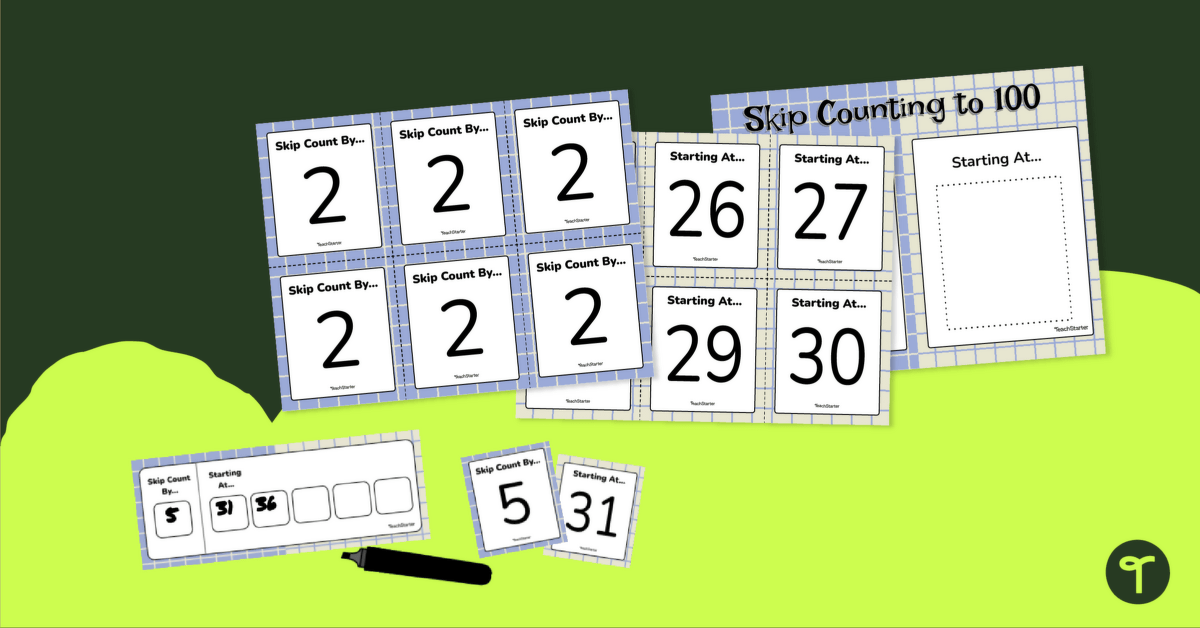

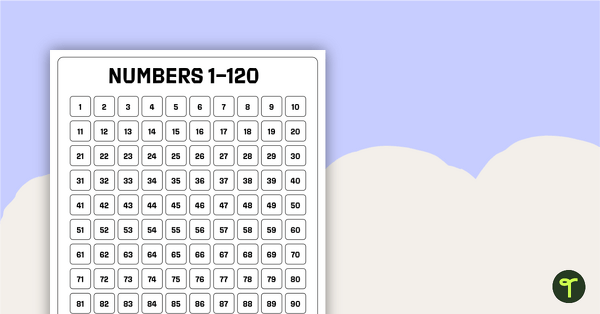

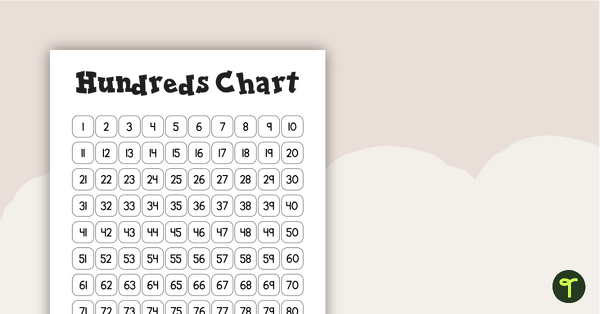
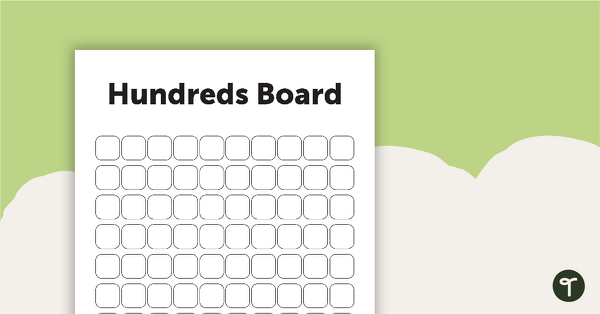
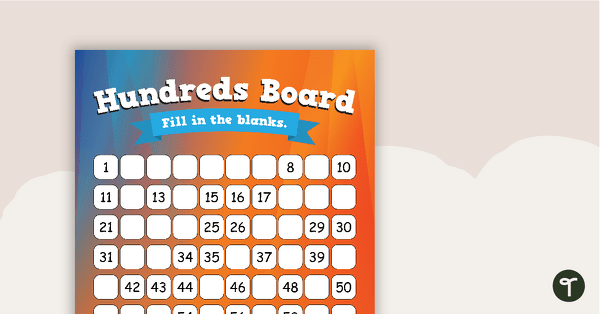
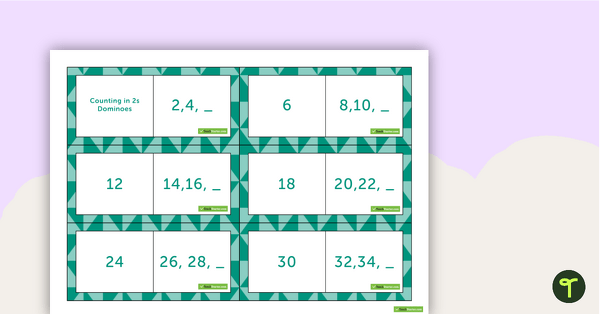
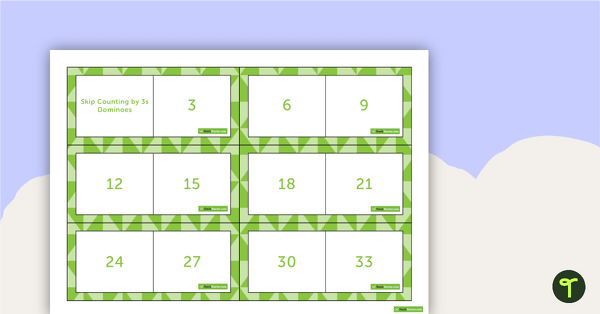
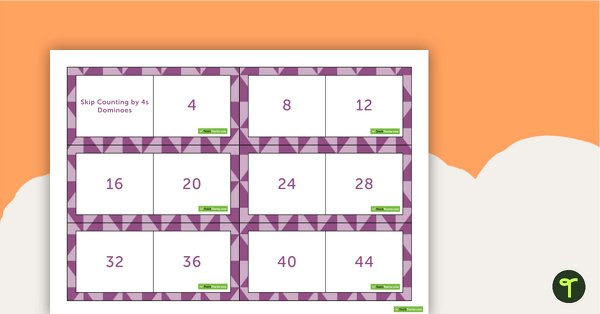
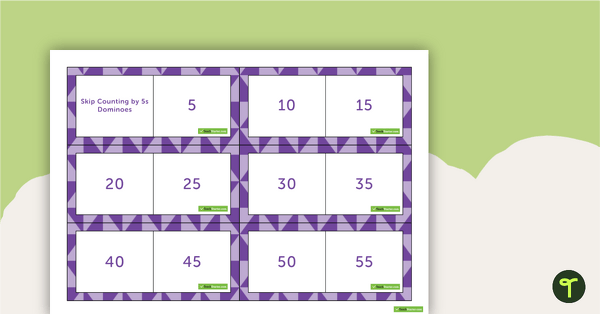
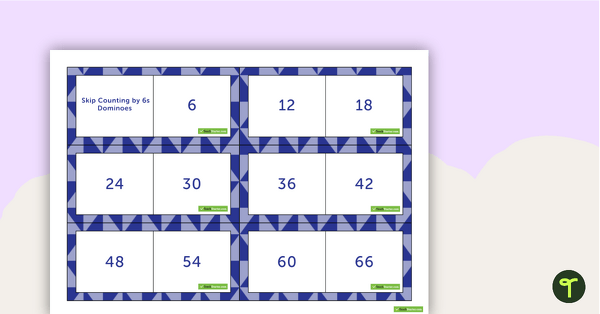
0 Comments
Write a review to help other teachers and parents like yourself. If you'd like to request a change to this resource, or report an error, select the corresponding tab above.